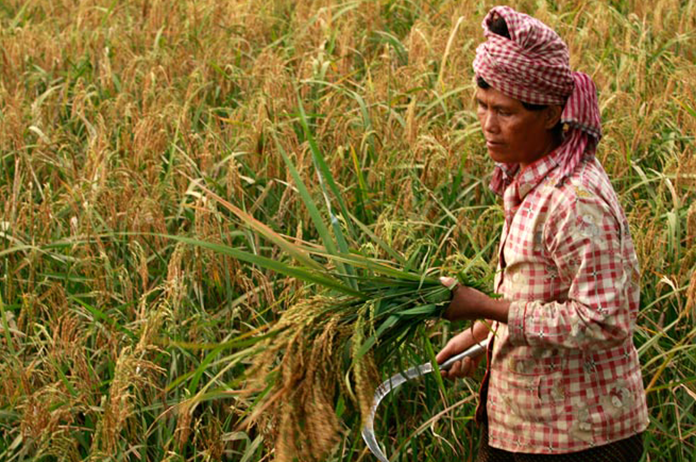Ministry Encourages Planting Of Japonica Rice

The Ministry of Agriculture is encouraging companies and farmers to begin planting Japonica rice after a series of tests show it can be grown successfully in the Kingdom.
Minister of Agriculture Veng Sakhon last week said that tests on Japonica rice have ended, yielding encouraging results. Those tests were being conducted in Kampong Thom province, and show that yields of Japonica are nearly twice as big as those of other varieties grown in the Kingdom. A hectare of land planted with Japonica can produce 6.5 tonnes of rice, Mr Sakhon said in a post on the ministry’s Facebook page. On average, a hectare in Cambodia yields 3.5 tonnes of rice.
During a visit to rice fields in Kampong Thom over the weekend, Mr Sakhon asked agriculture officials to promote the rice variety to farmers, arguing that this will help boost rice exports. Huang Ming An, a researcher on Japonica rice at laboratory Jiangsu Long An Agriculture, told Khmer Times that the lab is now planting the grain on eight hectares in Kampong Thom province as part of a pilot programme. Jiangsu Long An Agriculture, who is now negotiating contract farming agreements with local agricultural communities, plans to eventually expand Japonica fields to 300 hectares in the province, according to Mr Huang.
Tests on Japonica and its adaptability to the Cambodian soil have been conducted in some provinces in Cambodia since 2017 after the ministry signed an agreement in January with two Chinese laboratories, Hunan Hybrid Rice Research Centre and Jiangsu Long An Agriculture, to study the grain jointly. The Japonica variety will be exported mainly to China, currently the biggest market for Cambodian milled rice, according to Mr Sakhon.
Song Saran, CEO of Amru Rice, said Japonica has great potential but that Cambodia is still not ready to plant it for commercial purposes. “After many tests, we have concluded that Japonica rice can grow well in Cambodia with very high yields,” he said. “However, the variety needs a lot of water, so we must now study how to reduce the amount of water required,” said Mr Saran, whose firm has also conducted tests on the variety. According to Mr Saran, Japonica rice can sell well in South Korea, Turkey, and some countries in the European Union.
“Currently, growing Japonica rice is still in the pilot stage. We need at least three to four years to understand the crop better and enter the commercial stage,” Mr Saran said.
Last year, Cambodia exported 626,225 tonnes of rice, a drop of 1.5 percent compared to 2017. Local firms exported mainly three types of rice: fragrant rice (493,597 tonnes shipped, or 78.8 percent of total rice exports), long-grain white rice (105,990 tonnes, or 16.9 percent), and long-grain parboiled rice (26,638 tonnes, or 4.2 percent). The largest market for Cambodian rice continues to be the EU, which imported almost 270,000 tonnes, equivalent to 42.9 percent of total exports. By individual country, the largest buyer was China (170,000 tonnes), followed by France (90,000 tonnes), Malaysia (40,000 tonnes), Gabon (30,000 tonnes), and the Netherlands (26,000 tonnes).